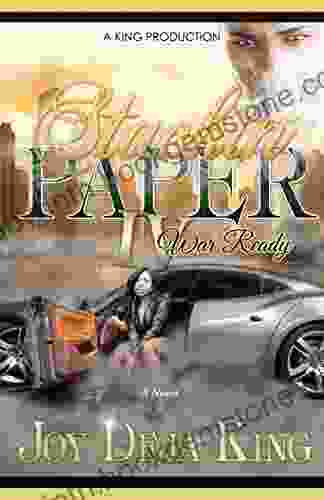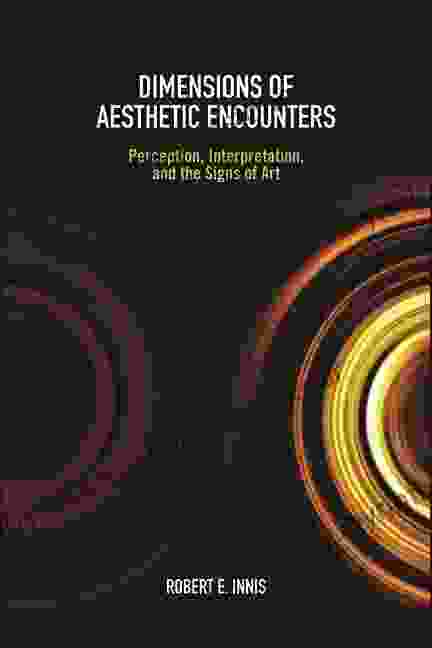Exploring the Dimensions of Aesthetic Encounters: A Journey Through the Sensory, Cognitive, and Affective Realms

The experience of beauty is a complex and multi-faceted phenomenon that has captivated philosophers, artists, and scientists for centuries. From the sublime grandeur of nature to the intricate beauty of a work of art, aesthetic encounters can evoke a wide range of emotions and thoughts. In this article, we will explore the different dimensions of aesthetic experiences, examining the sensory, cognitive, and affective processes that contribute to our appreciation of beauty.
5 out of 5
| Language | : | English |
| File size | : | 3099 KB |
| Text-to-Speech | : | Enabled |
| Screen Reader | : | Supported |
| Enhanced typesetting | : | Enabled |
| Print length | : | 302 pages |
The Sensory Dimension
The sensory dimension of aesthetic encounters involves the stimulation of our senses, including sight, sound, touch, smell, and taste. When we experience something beautiful, our senses are activated and engaged. The vibrant colors of a painting capture our attention, the melodious sounds of music soothe our souls, and the delicate texture of a piece of sculpture invites our touch.
Sensory experiences are essential for aesthetic enjoyment because they provide the raw material upon which our minds can work. The colors, shapes, sounds, and textures we perceive are the building blocks of our aesthetic experiences. Without sensory stimulation, we would not be able to appreciate the beauty that surrounds us.
The Cognitive Dimension
The cognitive dimension of aesthetic encounters refers to the mental processes that we employ to interpret and understand beauty. When we encounter something beautiful, our minds actively engage in trying to make sense of it. We analyze its structure, form, and content, and we attempt to identify the qualities that make it aesthetically pleasing.
Cognitive engagement is essential for aesthetic understanding because it allows us to appreciate the complexity and subtlety of beauty. By actively thinking about the object of our aesthetic experience, we can gain a deeper appreciation for its aesthetic qualities.
The Affective Dimension
The affective dimension of aesthetic encounters encompasses the emotions and feelings that we experience in response to beauty. When we encounter something beautiful, we may feel a sense of awe, wonder, joy, or tranquility. These emotions are an integral part of the aesthetic experience, and they contribute to our overall appreciation of beauty.
Affective responses are important because they provide a subjective and personal dimension to the aesthetic experience. Our emotions and feelings shape the way we perceive and interpret beauty. They can make the experience more intense, meaningful, and memorable.
Interplay of the Dimensions
It is important to note that the dimensions of aesthetic encounters are not separate and distinct categories. Rather, they are intertwined and interdependent. The sensory, cognitive, and affective dimensions work together to create a holistic aesthetic experience.
For example, when we look at a beautiful painting, our senses are stimulated by the colors, shapes, and textures. Our minds then engage in a process of interpretation and understanding, as we try to make sense of the painting's composition, symbolism, and meaning. This cognitive engagement leads to affective responses, such as feelings of awe, admiration, or joy.
Philosophical Perspectives on Aesthetic Encounters
Philosophers have long debated the nature of aesthetic experiences and the criteria for beauty. Some philosophers, such as Immanuel Kant, have argued that beauty is a subjective quality that is determined by the individual observer. Others, such as Plato, have argued that beauty is an objective quality that exists independently of the observer.
These different philosophical perspectives have influenced the way we think about aesthetic encounters and the dimensions of beauty. They have also led to different approaches to empirical research on aesthetic experiences.
Empirical Research on Aesthetic Encounters
Empirical research on aesthetic experiences has sought to investigate the psychological and neural mechanisms that underlie our appreciation of beauty. This research has used a variety of methods, including behavioral studies, neuroimaging studies, and psychophysiological studies.
Behavioral studies have shown that people are more likely to prefer certain types of objects and environments that are considered to be beautiful. Neuroimaging studies have identified specific brain regions that are active when people experience aesthetic pleasure. Psychophysiological studies have shown that aesthetic experiences can lead to changes in physiological responses, such as heart rate and skin conductance.
The Importance of Aesthetic Encounters
Aesthetic encounters play an important role in our lives. They can provide us with pleasure, enrichment, and meaning. They can also help us to connect with others, to learn about different cultures, and to develop our creativity.
By understanding the dimensions of aesthetic encounters, we can better appreciate the beauty that surrounds us. We can also cultivate our own aesthetic sensitivity and create more beautiful and meaningful experiences in our lives.
Aesthetic encounters are complex and multi-faceted experiences that involve the sensory, cognitive, and affective dimensions. By understanding the interplay of these dimensions, we can gain a deeper appreciation for the beauty that surrounds us. We can also cultivate our own aesthetic sensitivity and create more beautiful and meaningful experiences in our lives.
5 out of 5
| Language | : | English |
| File size | : | 3099 KB |
| Text-to-Speech | : | Enabled |
| Screen Reader | : | Supported |
| Enhanced typesetting | : | Enabled |
| Print length | : | 302 pages |
Do you want to contribute by writing guest posts on this blog?
Please contact us and send us a resume of previous articles that you have written.
 Best Book
Best Book Page Flip
Page Flip Bookshelf
Bookshelf Literary loom
Literary loom Chapter
Chapter Bookish
Bookish PageTurner
PageTurner Bibliophile
Bibliophile Story
Story Inkwell
Inkwell Bookworm
Bookworm Labyrinth
Labyrinth Plot Twist
Plot Twist Prose
Prose Paperback
Paperback Storyteller
Storyteller Sanctuary
Sanctuary Fiction
Fiction Reading
Reading Chronicle
Chronicle Read
Read Deborah Davis
Deborah Davis Carrie Stuart Parks
Carrie Stuart Parks Daniel Burleigh Parkhurst
Daniel Burleigh Parkhurst Leila Guerriero
Leila Guerriero Joe Starita
Joe Starita Tom Satterly
Tom Satterly True Kelley
True Kelley Jennifer M Eaton
Jennifer M Eaton Ian Frazier
Ian Frazier Dan Fox
Dan Fox T Scott Bryan
T Scott Bryan Rory Miller
Rory Miller David Maraniss
David Maraniss Lisa Yaszek
Lisa Yaszek Julie Lythcott Haims
Julie Lythcott Haims David W Galenson
David W Galenson Jeromy Hopgood
Jeromy Hopgood Ella Barrick
Ella Barrick Diane Cardaci
Diane Cardaci Loretta Outwater Cox
Loretta Outwater Cox Sara Ackerman
Sara Ackerman Gael Berton
Gael Berton Scott Kenemore
Scott Kenemore Lisanne Norman
Lisanne Norman Ernst Bergen
Ernst Bergen Rami Yelda
Rami Yelda Susan Hayes
Susan Hayes Gabrielle Selz
Gabrielle Selz Matthew Quirk
Matthew Quirk Co Spinhoven
Co Spinhoven Zeena Shah
Zeena Shah Kevin J Anderson
Kevin J Anderson Craig W Stanfill
Craig W Stanfill Margaret Fletcher
Margaret Fletcher Robert Appleton
Robert Appleton Mark Bourrie
Mark Bourrie Michelle L Hardy
Michelle L Hardy D Dauphinee
D Dauphinee T J Clark
T J Clark Grady Hendrix
Grady Hendrix Ward Larsen
Ward Larsen Gerda Weissmann Klein
Gerda Weissmann Klein Dr Quinta
Dr Quinta Jerry Brotton
Jerry Brotton Michelle Brown
Michelle Brown T R Napper
T R Napper Beverly Jenkins
Beverly Jenkins S A Snyder
S A Snyder W B Yeats
W B Yeats M R Forbes
M R Forbes Jeremy Ford
Jeremy Ford Jake Spicer
Jake Spicer Hannah Strong
Hannah Strong Colin Souness
Colin Souness Massimiliano Musina
Massimiliano Musina Robert Isenberg
Robert Isenberg Eric Musgrave
Eric Musgrave Fethi Mansouri
Fethi Mansouri Lorraine Bartlett
Lorraine Bartlett Marc Taro Holmes
Marc Taro Holmes Dalai Lama
Dalai Lama Harold P Howard
Harold P Howard Cyn Alexander
Cyn Alexander Gerry Virtue
Gerry Virtue Culture Smart
Culture Smart Sue Monk Kidd
Sue Monk Kidd Gene Wolfe
Gene Wolfe Gerald Everett Jones
Gerald Everett Jones Peter Ninnes
Peter Ninnes Daniel Ankele
Daniel Ankele James Seabright
James Seabright Dan Grunfeld
Dan Grunfeld Karen Cheung
Karen Cheung Susan Linden Emde
Susan Linden Emde Nicolas Lampert
Nicolas Lampert Virginia Matheson Hooker
Virginia Matheson Hooker Helen Armstrong
Helen Armstrong Dave Willmarth
Dave Willmarth Yuri Ulengov
Yuri Ulengov Cyril W Beaumont
Cyril W Beaumont Michael Reardon
Michael Reardon Minal Hajratwala
Minal Hajratwala Parvati Sharma
Parvati Sharma Yuriko Saito
Yuriko Saito T D Lake
T D Lake Pat Grillo
Pat Grillo Cp Mchugh
Cp Mchugh Sarah Jackson
Sarah Jackson Jason Cochran
Jason Cochran William J Burns
William J Burns Terri Kozlowski
Terri Kozlowski Jennifer Brozek
Jennifer Brozek Criss Angel
Criss Angel Dennis Valder
Dennis Valder Iris Apfel
Iris Apfel Eddie Robson
Eddie Robson Ronald G Knapp
Ronald G Knapp Donald Spoto
Donald Spoto Craig A Falconer
Craig A Falconer Cory Doctorow
Cory Doctorow Fiona Ferris
Fiona Ferris Monika Forsberg
Monika Forsberg John Tanner
John Tanner Marcus Richardson
Marcus Richardson Max Allan Collins
Max Allan Collins Daniel Abraham
Daniel Abraham Jeremy Kroeker
Jeremy Kroeker G B Edwards
G B Edwards Jeffrey Alford
Jeffrey Alford Mark Dawson
Mark Dawson Warren Murphy
Warren Murphy Porochista Khakpour
Porochista Khakpour Ellie Taylor
Ellie Taylor Danica Roem
Danica Roem R P Jones
R P Jones Domnica Radulescu
Domnica Radulescu Lorne Ryburn
Lorne Ryburn D J Holmes
D J Holmes Mark Cramer
Mark Cramer Leonard S Marcus
Leonard S Marcus Dana Facaros
Dana Facaros Olivia Campbell
Olivia Campbell Dk Eyewitness
Dk Eyewitness Yelapa Memo
Yelapa Memo Ted Andrews
Ted Andrews C F Jernigan
C F Jernigan Kristina Mcmorris
Kristina Mcmorris Clive Johnson
Clive Johnson Mary Boone
Mary Boone Mary Paik Lee
Mary Paik Lee Meredith Little
Meredith Little Eric Trueheart
Eric Trueheart Tom Geng
Tom Geng Cynthia Clampitt
Cynthia Clampitt Helen Augur
Helen Augur Isadora Duncan
Isadora Duncan Michael Shnayerson
Michael Shnayerson Ann Fessler
Ann Fessler L A Braun
L A Braun Issa Rae
Issa Rae Gina Mckinnon
Gina Mckinnon Dahlma Llanos Figueroa
Dahlma Llanos Figueroa Megan Lynch
Megan Lynch William Evans
William Evans Dan Abnett
Dan Abnett John Logan
John Logan Colson Whitehead
Colson Whitehead L E Modesitt Jr
L E Modesitt Jr V D Bucket
V D Bucket Julissa Arce
Julissa Arce Donna Jackson Nakazawa
Donna Jackson Nakazawa Steven Skaggs
Steven Skaggs Mia Black
Mia Black Sam Branson
Sam Branson Collins Dictionaries
Collins Dictionaries Gina Yashere
Gina Yashere Peter Hanson
Peter Hanson Carlos M N Eire
Carlos M N Eire Todd Geers
Todd Geers Theo Dorgan
Theo Dorgan Hyeonseo Lee
Hyeonseo Lee Kathryn Mcmaster
Kathryn Mcmaster Lan Sluder
Lan Sluder Dana Sachs
Dana Sachs Denise Hamilton
Denise Hamilton Xiaolu Guo
Xiaolu Guo Dan X Solo
Dan X Solo Deanna Amodeo
Deanna Amodeo Sheila Montilla
Sheila Montilla Cynthia Newcomer Daniel
Cynthia Newcomer Daniel Kirstin Dow
Kirstin Dow Craig Seymour
Craig Seymour Curatoria Draconis
Curatoria Draconis Eric Jerome Dickey
Eric Jerome Dickey Daily Language Learning
Daily Language Learning Coryn Anaya Clarke
Coryn Anaya Clarke Gabrielle Zevin
Gabrielle Zevin Nigel Barley
Nigel Barley Ingrid Sischy
Ingrid Sischy Carl Sagan
Carl Sagan Karen Mcnally
Karen Mcnally Craig Carey
Craig Carey Courtney Ragsdale
Courtney Ragsdale Irene Aylworth Douglass
Irene Aylworth Douglass Darren Critchley
Darren Critchley Craig Melvin
Craig Melvin Ron Celano
Ron Celano Saad Z Hossain
Saad Z Hossain Richard East
Richard East Jessica Kerwin Jenkins
Jessica Kerwin Jenkins Jim Hutchinson
Jim Hutchinson Myriam Gurba
Myriam Gurba Tom Poland
Tom Poland Steve Huston
Steve Huston David G Hartwell
David G Hartwell Grace Goodwin
Grace Goodwin Bill Geist
Bill Geist John Grisham
John Grisham Elizabeth Reid
Elizabeth Reid Rebecca Hardiman
Rebecca Hardiman Irving Layton
Irving Layton David Kroese
David Kroese Yunte Huang
Yunte Huang Jeff Tanyard
Jeff Tanyard Tom Hill
Tom Hill Clementina Oluchi Augustine
Clementina Oluchi Augustine Tana Stone
Tana Stone Grace Barrington Shaw
Grace Barrington Shaw Dick J Reavis
Dick J Reavis Cornelius C Kubler
Cornelius C Kubler Hayley Stone
Hayley Stone Daigo Murasaki
Daigo Murasaki Maggie Rowe
Maggie Rowe Stephen Armstrong
Stephen Armstrong Neal Stephenson
Neal Stephenson Norman Hathaway
Norman Hathaway D K Pike
D K Pike Yutaka Yazawa
Yutaka Yazawa Nancy Marchant
Nancy Marchant Dawn Turner Trice
Dawn Turner Trice Jacques D Amboise
Jacques D Amboise Cristy C Road
Cristy C Road June Emerson
June Emerson D K Holmberg
D K Holmberg William Schoell
William Schoell Sasha Duerr
Sasha Duerr Siri Hustvedt
Siri Hustvedt Pat Kramer
Pat Kramer Robert Silverberg
Robert Silverberg Dakota Krout
Dakota Krout Synithia Williams
Synithia Williams Baby Professor
Baby Professor David E Wilkins
David E Wilkins John Humphries
John Humphries Jerry Beck
Jerry Beck Craig Ferguson
Craig Ferguson Cookie Johnson
Cookie Johnson Tc Manning
Tc Manning Craig Johnson
Craig Johnson Barrington Barber
Barrington Barber Brandon Q Morris
Brandon Q Morris Thefirstdefier
Thefirstdefier Marius Kociejowski
Marius Kociejowski Roy Kinnard
Roy Kinnard Henning Nelms
Henning Nelms Ronald Pratt
Ronald Pratt Dan Zehr
Dan Zehr Tim Judah
Tim Judah Marc Canter
Marc Canter D Ward Cornell
D Ward Cornell Dakota James
Dakota James Cliff Mass
Cliff Mass Love Belvin
Love Belvin Keith Recker
Keith Recker Pearl Tate
Pearl Tate J A Johnstone
J A Johnstone Marko Kloos
Marko Kloos Insun Lee
Insun Lee J Z Foster
J Z Foster Sarah Culberson
Sarah Culberson R Allen Chappell
R Allen Chappell Dallas Shaw
Dallas Shaw Dan Diggles
Dan Diggles Karl Johnson
Karl Johnson Jeanne Farr Mcdonnell
Jeanne Farr Mcdonnell Eric Lax
Eric Lax Dennis Lehane
Dennis Lehane Clayton Thomas Muller
Clayton Thomas Muller Yoko Hatta
Yoko Hatta Eat Like A Local
Eat Like A Local Khadizhat Witt
Khadizhat Witt Joan Didion
Joan Didion Explorer Publishing
Explorer Publishing Luca Turin
Luca Turin William Powers
William Powers Joshua M Greene
Joshua M Greene Nawoko
Nawoko Em Brown
Em Brown J J Green
J J Green Alexa West
Alexa West Cornelius Tacitus
Cornelius Tacitus Emma Larkin
Emma Larkin Marya Hornbacher
Marya Hornbacher Tim Vernooij
Tim Vernooij Lisa Morton
Lisa Morton Paula Giddings
Paula Giddings Niall Teasdale
Niall Teasdale T J S George
T J S George Dale Brown
Dale Brown Philip Simmons
Philip Simmons James Rubik
James Rubik Graham Wilson
Graham Wilson Rayna Tyler
Rayna Tyler Craig Briggs
Craig Briggs Leslie Cabarga
Leslie Cabarga Jennifer Thompson Cannino
Jennifer Thompson Cannino Gianrico Carofiglio
Gianrico Carofiglio Laura Donnelly Bethmann
Laura Donnelly Bethmann Diana Hollingsworth Gessler
Diana Hollingsworth Gessler Jon May
Jon May Henry James
Henry James Clifford Irving
Clifford Irving Leah Gallo
Leah Gallo Colin Thubron
Colin Thubron J C Romero
J C Romero Jane Sutcliffe
Jane Sutcliffe D J Bodden
D J Bodden Jane Hamilton
Jane Hamilton Andrew Patrick Nelson
Andrew Patrick Nelson Geoff Saunders
Geoff Saunders Thaddeus Carhart
Thaddeus Carhart Diana Friel Mcgowin
Diana Friel Mcgowin Cricut Maker
Cricut Maker Dan Sugralinov
Dan Sugralinov Sean Egan
Sean Egan Cristela Alonzo
Cristela Alonzo Kristina Evans
Kristina Evans Cornelius N Grove
Cornelius N Grove Maya Angelou
Maya Angelou John Paul Brammer
John Paul Brammer Lee Feigon
Lee Feigon Pierre Alex Jeanty
Pierre Alex Jeanty James Alan Gardner
James Alan Gardner Frances Dinkelspiel
Frances Dinkelspiel J Robert Kennedy
J Robert Kennedy Fiona Davis
Fiona Davis Damion Hunter
Damion Hunter Blair Polly
Blair Polly Karen Stocker
Karen Stocker Jodi Picoult
Jodi Picoult Michelle Damiani
Michelle Damiani Tony Pike
Tony Pike Cora Tesheira
Cora Tesheira Sara Wheeler
Sara Wheeler Ursula K Le Guin
Ursula K Le Guin Sarena Ulibarri
Sarena Ulibarri Sujean Rim
Sujean Rim Kenya Clark
Kenya Clark David Drake
David Drake Sean Hartlieb
Sean Hartlieb Cynthia Saltzman
Cynthia Saltzman Ian Whitaker
Ian Whitaker Robert E Innis
Robert E Innis Clyde D Souza
Clyde D Souza Donna Zakowska
Donna Zakowska Coert Voorhees
Coert Voorhees Kyle Widner
Kyle Widner Dale Robinson
Dale Robinson Linda Riesenberg Fisler
Linda Riesenberg Fisler Edward Johnston
Edward Johnston Douglas Preston
Douglas Preston Clive Cussler
Clive Cussler David Bischoff
David Bischoff Connie Malamed
Connie Malamed Sarah Thornton
Sarah Thornton Liza Rodman
Liza Rodman Cynthia Royce
Cynthia Royce Connie Mcbride
Connie Mcbride Roberto Pedreira
Roberto Pedreira Steve Biddle
Steve Biddle Cynthia Leal Massey
Cynthia Leal Massey Luis Alberto Urrea
Luis Alberto Urrea Steven Collins
Steven Collins Bob Martin
Bob Martin Laurent Dubois
Laurent Dubois Danny Trejo
Danny Trejo Dan Simmons
Dan Simmons Thrive Language Audiobooks
Thrive Language Audiobooks S M Anderson
S M Anderson Margaret Coker
Margaret Coker D Scott Bowers
D Scott Bowers John Mcwade
John Mcwade James Patterson
James Patterson Eleanor Ford
Eleanor Ford Conn Iggulden
Conn Iggulden Craig Mod
Craig Mod Coralie Bickford Smith
Coralie Bickford Smith Irene Levin Berman
Irene Levin Berman Hal Vaughan
Hal Vaughan Jason M Hough
Jason M Hough Eva Heller
Eva Heller Nancey Cummings
Nancey Cummings David Cousens
David Cousens Jeremy Robert Johnson
Jeremy Robert Johnson Crystal Allen
Crystal Allen Harry Lorayne
Harry Lorayne Ernest J Gaines
Ernest J Gaines Tracy Lambert
Tracy Lambert Amaya Black
Amaya Black Janet Catherine Berlo
Janet Catherine Berlo Garry Mcgee
Garry Mcgee Stephen Brooks
Stephen Brooks Dani Dyer
Dani Dyer Ben Ohmart
Ben Ohmart Yair Lapid
Yair Lapid Elizabeth May
Elizabeth May Dan Popp
Dan Popp Stephen Kinzer
Stephen Kinzer Cookie Mueller
Cookie Mueller Susan Cross
Susan Cross Michael Henry
Michael Henry Marisol Enchufa
Marisol Enchufa Nick Lyons
Nick Lyons Cristina Salat
Cristina Salat Maham Johnson
Maham Johnson Mike Katz
Mike Katz Victor Villasenor
Victor Villasenor Euclides Da Cunha
Euclides Da Cunha Joy Castro
Joy Castro Trenae
Trenae Jessica Walstad
Jessica Walstad David Walton
David Walton Karen O Brien
Karen O Brien Harvey J Kaye
Harvey J Kaye Terry Darlington
Terry Darlington Dan Bigley
Dan Bigley Twyla Tharp
Twyla Tharp Julia Chiles
Julia Chiles John Dennehy
John Dennehy Taylor Fuller
Taylor Fuller Kelly Gay
Kelly Gay Connie Willis
Connie Willis Nick Snelling
Nick Snelling P A Piatt
P A Piatt Hannah Hart
Hannah Hart Wyclef Jean
Wyclef Jean Tracey Lange
Tracey Lange Henry Koster
Henry Koster Lina Rather
Lina Rather Sean Williams
Sean Williams John Baxter
John Baxter Prince
Prince Mary Alice Monroe
Mary Alice Monroe Danielle Krysa
Danielle Krysa Karen Swan
Karen Swan Cody Whitfill
Cody Whitfill Mitsuo Kure
Mitsuo Kure Mancho Soto
Mancho Soto Serena Gilbert
Serena Gilbert John Luther Adams
John Luther Adams Robert De La Sizeranne
Robert De La Sizeranne Nick Jans
Nick Jans Jay C Labarge
Jay C Labarge Olan Thorensen
Olan Thorensen Dale Pollock
Dale Pollock Janet Koplos
Janet Koplos Scott Moon
Scott Moon Colin Jones
Colin Jones Crypto Dukedom
Crypto Dukedom Mia Michaels
Mia Michaels Daniel L Bray
Daniel L Bray Fred Ladd
Fred Ladd Marie Brennan
Marie Brennan Jordan Matter
Jordan Matter Isabella Maldonado
Isabella Maldonado Wade Motawi
Wade Motawi Peter Parnell
Peter Parnell Karolyn Kiisel
Karolyn Kiisel Jon Breakfield
Jon Breakfield Kate Moore
Kate Moore Sue Tabashnik
Sue Tabashnik Craig Martelle
Craig Martelle Joan D Vinge
Joan D Vinge Joy Deja King
Joy Deja King Natasha Sims
Natasha Sims Lin Wellford
Lin Wellford Les Standiford
Les Standiford Brad Olsen
Brad Olsen Tinia Montford
Tinia Montford John Parascandola
John Parascandola Crispin Sartwell
Crispin Sartwell Nelson Demille
Nelson Demille George Saunders
George Saunders David Mikics
David Mikics Melissa Stephenson
Melissa Stephenson Corky Parker
Corky Parker Kristen Britain
Kristen Britain Marie Killilea
Marie Killilea Olivia Dade
Olivia Dade Frank Bruni
Frank Bruni Steve Reifenberg
Steve Reifenberg Jaclyn Bailie
Jaclyn Bailie Richard K Morgan
Richard K Morgan Jay Ryan
Jay Ryan Coryne Hall
Coryne Hall Ketut Suasti
Ketut Suasti Kati Marton
Kati Marton James Rosenquist
James Rosenquist Nathan D Horowitz
Nathan D Horowitz Reprint Edition Kindle Edition
Reprint Edition Kindle Edition Torre Deroche
Torre Deroche Dan Gheno
Dan Gheno Roy Simmons
Roy Simmons Faye Moskowitz
Faye Moskowitz Piera Sonnino
Piera Sonnino Susan Yeates
Susan Yeates Cyrus Highsmith
Cyrus Highsmith Colleen Hall
Colleen Hall K C Jones
K C Jones Sandee Cohen
Sandee Cohen Joshua T Calvert
Joshua T Calvert Tony Rafael
Tony Rafael David Riley
David Riley Ian Douglas
Ian Douglas Chris Strodder
Chris Strodder Douglas Century
Douglas Century Xinran
Xinran Dallen J Timothy
Dallen J Timothy
Light bulbAdvertise smarter! Our strategic ad space ensures maximum exposure. Reserve your spot today!

 Jared NelsonThe Unofficial Guide to Handmade Cricut Crafts: Unleashing Your Creativity...
Jared NelsonThe Unofficial Guide to Handmade Cricut Crafts: Unleashing Your Creativity...
 Vladimir NabokovTravels And Adventures In South And Central America: A Journey of a Lifetime
Vladimir NabokovTravels And Adventures In South And Central America: A Journey of a Lifetime
 Jeremy CookDungeon Desolation: The Divine Dungeon - An Epic Adventure in the Depths of...
Jeremy CookDungeon Desolation: The Divine Dungeon - An Epic Adventure in the Depths of... Kevin TurnerFollow ·19.1k
Kevin TurnerFollow ·19.1k Derek BellFollow ·13.5k
Derek BellFollow ·13.5k David Foster WallaceFollow ·5.5k
David Foster WallaceFollow ·5.5k Jack ButlerFollow ·13.4k
Jack ButlerFollow ·13.4k Alex FosterFollow ·13k
Alex FosterFollow ·13k Darnell MitchellFollow ·5k
Darnell MitchellFollow ·5k Milton BellFollow ·2k
Milton BellFollow ·2k Ruben CoxFollow ·13.9k
Ruben CoxFollow ·13.9k

 Billy Peterson
Billy PetersonStackin' Paper Part War Ready: A Comprehensive Guide to...
In today's competitive financial landscape,...

 Jedidiah Hayes
Jedidiah HayesDennis Valder: Unveiling the Enchanting World of Cuba's...
In the heart...

 Ryan Foster
Ryan FosterDelving into the Captivating Enigma of The Green Season...
In the verdant tapestry of literary...

 Jeremy Mitchell
Jeremy MitchellZapotec Helen Augur: A Visionary Leader and Cultural...
In the heart of...

 Larry Reed
Larry ReedSci-Fi Alien Warrior Romance: A Tribute to the Brides of...
In the vast expanse of the...
5 out of 5
| Language | : | English |
| File size | : | 3099 KB |
| Text-to-Speech | : | Enabled |
| Screen Reader | : | Supported |
| Enhanced typesetting | : | Enabled |
| Print length | : | 302 pages |








